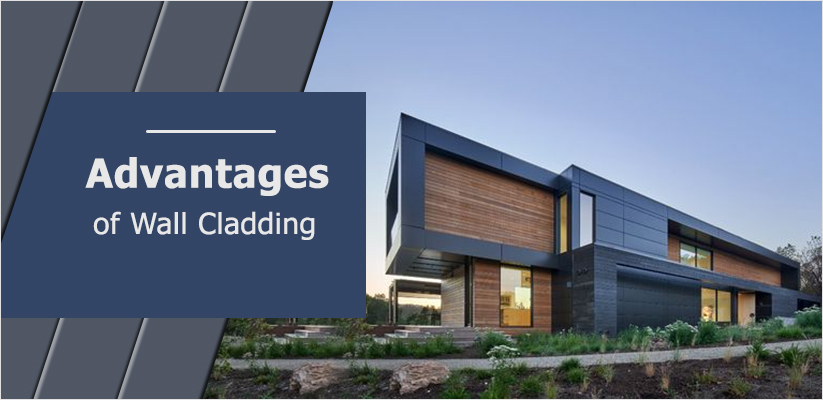Cladding has become a popular solution in modern construction, offering both functional and aesthetic advantages. Cladding refers to the application of a material, such as wood, metal, stone, or vinyl, over a building’s exterior to provide a protective layer.
This technique enhances the durability, appearance, and energy efficiency of buildings. Whether for residential, commercial, or industrial projects, cladding offers several benefits that make it a smart choice for builders and homeowners alike.
1. Improved Aesthetic Appeal
One of the most obvious benefits of using cladding in construction is the enhanced aesthetic appeal it provides. Cladding comes in a wide variety of materials, colors, textures, and finishes, allowing architects and homeowners to customize the look of a building. Whether you’re aiming for a sleek, modern facade or a more traditional appearance, cladding offers endless design possibilities.
Materials like timber, stone, brick, and metal can be used to create striking exterior designs that complement the surrounding environment. Cladding can transform a dull or outdated building into something visually appealing, making it a great option for both new constructions and renovation projects.
2. Protection from the Elements
Another significant advantage of cladding is its ability to protect the underlying structure of a building from the elements. Harsh weather conditions, such as rain, snow, wind, and UV radiation, can cause significant damage to a building’s exterior over time. Cladding acts as a shield, preventing water infiltration, corrosion, and wear from exposure to the environment.
By serving as a barrier, cladding can help extend the life of the building’s core structure. Materials such as metal, stone, and composite panels are particularly effective at resisting weather-related damage, providing long-term protection against the elements.
3. Enhanced Insulation and Energy Efficiency
Cladding can significantly improve a building’s insulation and energy efficiency. Many cladding materials come with insulating properties, which help to regulate indoor temperatures by reducing heat loss in the winter and heat gain in the summer. This makes cladding a great way to improve a building’s thermal performance, reduce energy consumption, and lower utility bills.
In addition to insulating against temperature fluctuations, cladding also provides sound insulation, making it an ideal choice for buildings located in noisy environments. By reducing both heat transfer and noise pollution, cladding helps create a more comfortable living or working environment.
4. Low Maintenance
One of the key advantages of cladding is its low maintenance requirements. Most cladding materials, such as metal, vinyl, and stone, are designed to withstand the test of time and require little upkeep. These materials are resistant to corrosion, rot, and insect infestations, making them a durable and cost-effective choice in the long run.
Unlike painted surfaces, which may need to be repainted every few years, cladding typically retains its appearance for decades without needing much attention. Occasional cleaning and inspections are usually sufficient to keep cladding in good condition. This low-maintenance feature is especially appealing to property owners who want to reduce long-term upkeep costs.
5. Increased Property Value
Using cladding in construction can also boost the value of a property. The combination of improved aesthetics, enhanced protection, and increased energy efficiency can make a building more attractive to potential buyers or tenants. A well-designed cladding system not only improves the building’s appearance but also suggests that the property is built to last, with modern materials that require less maintenance.
In addition, cladding that provides extra insulation can result in lower energy bills, which can be a selling point for environmentally-conscious buyers. These benefits often lead to higher property values and better returns on investment for property owners.
6. Fire Resistance
Many cladding materials, such as metal, fiber cement, and certain composite panels, are designed to be fire-resistant, offering an additional layer of protection in case of a fire. Fire-rated cladding can slow the spread of flames, giving occupants more time to evacuate and reducing the risk of structural damage.
Using fire-resistant cladding is particularly important for buildings in areas prone to wildfires or for commercial structures where fire safety regulations are strict. In many cases, incorporating cladding with fire-resistant properties can help buildings meet local building codes and fire safety standards.
7. Sustainability and Environmental Impact
With growing concerns about sustainability in construction, many cladding materials offer environmentally-friendly solutions. Materials like timber and certain composite panels can be sourced from sustainable, renewable resources. Additionally, some cladding systems are designed to be energy-efficient, further reducing the environmental impact of the building.
In many cases, cladding materials can also be recycled at the end of their life cycle, contributing to the circular economy. By choosing sustainable cladding materials, builders can reduce their carbon footprint and create structures that align with green building practices.
8. Ease of Installation
Cladding systems are relatively easy to install compared to some other construction methods. Pre-fabricated panels and modular cladding systems can be quickly assembled on-site, which reduces construction time and labor costs. This efficiency makes cladding a preferred choice for both new builds and renovation projects.
The ease of installation also means fewer disruptions to the surrounding area and shorter project timelines, making cladding a practical option for commercial and residential projects alike.
Use Cladding in Construction
Cladding provides a wide range of benefits, from enhancing a building’s aesthetic appeal to offering protection from the elements and improving energy efficiency. It is a versatile solution that is both practical and cost-effective, contributing to the long-term durability and sustainability of a structure.
With the added advantages of fire resistance, low maintenance, and increased property value, cladding is a valuable addition to any construction project. Whether you’re building from scratch or updating an existing structure, cladding is an investment that pays off in the long run.







